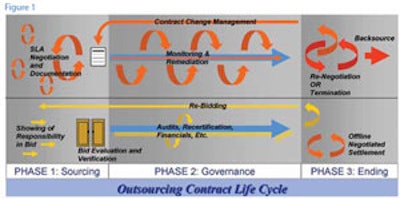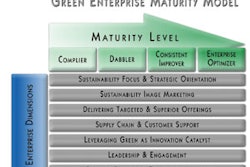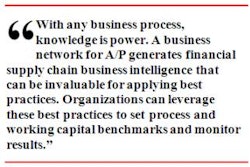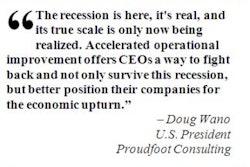
Deloitte’s 2008 report on global outsourcing, “Why Settle for Less?” (Deloitte Consulting 2008 Outsourcing Report), has garnered a large response among many commentators, ranging from the Wall Street Journal to industry blogs. In sum, survey results in the Deloitte report show that 83 percent of global IT outsourcing deals achieve 25 percent cost savings. For two-thirds of outsourcing deals, price is the key driver. Besides identifying the reasons companies outsource, the Deloitte survey revealed widespread disappointment with how outsourcing deals are put together. A whopping three-fourths of respondents feel their outsourcing contracts suffer from poor vendor selection and lack of service levels.
What the report points out is a need for business to not only come up with better ways of outsourcing, but also ways of outsourcing that will garner the best price. The real question many businesses need to answer when outsourcing is not “why” they should outsource – they already know they want to lower costs – but “how” should they outsource.
Sealed-bid Sourcing Model. A price-centered sourcing model does exist for outsourcing. It is called “sealed bidding,” and it can be found in the procurement regulations of the U.S. Government.
Sealed bidding is described in Federal Acquisition Regulation (FAR) Part 14. Part 14 says that when price is the only deciding factor, and there are multiple providers interested in the work, by law Government agencies must contract for services through sealed bidding. Sealed bidding requires the Government to determine all of its work requirements up front and to put them in an invitation for bid (IFB). In response, providers quote a fixed price.
The important point here is not the bit about providers handing in sealed envelopes, but rather how sealed bidding works and why. Its rules are not arbitrary: Sealed bidding represents a well-rationalized commercial trade-off designed to zero in on price and to minimize transaction costs on both sides.
Provider-side Advantages. With sealed bidding, providers are relieved from having to figure out what to propose in order to win the bid; they only need to meet the requirements and do some basic pricing. Sealed bidding makes it clear up front what the planned work is. All providers are asked to do is work the plan. Value-added services like governance, relationship management, knowledge management or innovation are not part of outsourcing by sealed bidding (unless they are somehow specified in the IFB).
Customer-side Advantages. By making it easier for providers to quote a single price for the work, sealed bidding also protects the Government from cost overruns. (The Government requires a fixed price, we can broaden this requirement to include a not-to-exceed, or NTE, amount for labor hours and rates.) Like the provider, with sealed bidding the Government avoids transaction costs like proposal evaluation, negotiation, creating an outsourcing governance structure and transitioning business operations.
Threshold Qualifications. The final requirement in sealed bidding is for providers to affirmatively show in their bids that they are “responsible.” Figure 1 highlights the more streamlined responsibility showing approach to qualifying providers. It shows the procedural differences between managing services by service levels and by threshold qualifications.
Purpose-driven Outsourcing. To many companies, sealed bidding may sound like a good idea in limited circumstances, but not where the company is contemplating longer-term, wholesale outsourcing of business processes. In response, it should be remembered that we are not making the case for streamlined outsourcing models like sealed bidding in all outsourcing. All we are saying is that where the “bottom line” is the sole or primary motivation to outsource, outsourcing providers should be solicited and managed in a way that best achieves a better bottom line. This approach is called “purpose driven outsourcing” (“purpose driven outsourcing” is a service mark of James River Consulting LLC).
Simply put, purpose-driven outsourcing is aligning sourcing models with the business goals behind outsourcing to optimize the chances for outsourcing success. Once a company determines why it is outsourcing, it can then decide how it should outsource to accomplish its goals.
Three-phase Lifecycle. Purpose-driven outsourcing views outsourcing as a lifecycle made up of three basic phases: 1) evaluation and selection of outsourcing providers; 2) management (sometimes called “governance”) of the service performance and delivery; and 3) sharing, ending and transitioning outsourcing services. For example, we have seen a description of how sealed bidding handles the first phase, sourcing, by reducing the process to fulfillment of requirements and proof of qualifications. Sealed bidding also minimizes the second phase, management, by including performance-related standards and certifications in the qualifications. The third phase, ending services, is also cut-and-dry under sealed bidding as compared to other sourcing models.
Non-price-driven Outsourcing. What if cost savings are not the reason for outsourcing? What if quality or innovation are more important? Using purpose-driven outsourcing, we would probably conclude that there are other, more effective ways to achieve these goals than strict sealed bidding, just as Government regulations prescribe sourcing models other than sealed bidding when, for example, the nature of the work is highly risky or there is uncertainty about the availability of qualified personnel. Very likely we would look at other outsourcing models, beginning with “best value” solicitations that sacrifice maximum competition and simpler selection procedures in favor of fewer bidders and more sophisticated evaluation criteria.
Figure 2 is a quad chart depicting the relationship of popular sourcing models and methods to outsourcing how’s and why’s in purpose-driven outsourcing.
Six Discriminators between Purpose-driven Sourcing Models. Why do purpose-driven outsourcing models look and work differently from each other?
1. Competition. Competition imposes up-front transaction costs on the parties, depending on the formality and complexity of the manner in which it is used. For non-price goals, the field of providers capable of performing may be limited. Competition may not be worth the cost and the exposure of internal processes and data. On the other hand, competition is the single most effective tool for obtaining not just best price but also obtaining provider commitments to other goals.
2. Visibility management. Quality of service, benchmarking, seamless integration of operations, uptime, disaster recovery and scalability are just a few of the reasons for customers monitoring or managing provider services. Visibility raises issues of transaction cost and division of responsibility. Management by the customer, either total or in concert with the provider, goes beyond visibility by attempting to directly control performance.
3. Product. Describing services in terms of staffing – positions descriptions and minimum personnel qualifications – is an example of indirect service description. Sometimes there are valid reasons for taking this approach, such as process reengineering. The opposite approach is to describe services as projects with deliverable products. Products are much easier to review for completeness, quality and ROI.
4. Flow. Flow is the way work and payment are exchanged between customer and provider. Services can be performed and paid for on an order basis, or they can be provided on a time and materials basis, without connection to any defined scope or milestone, such as staff augmentation. Flow-based transaction costs, such as project management, are usually considered necessary to protect against unnecessary work and runaway budgets.
5. Ownership liability. Work may be performed using customer- or provider-owned processes, technology systems and data. Ownership by one party decreases both financial and operational risk for the other party, which can constitute a major piece of an outsourcing business case.
6. Consequences. The simplest and most extreme example of a consequence is termination of a contract for non-performance. In price-driven outsourcing, consequences are limited to termination and non-payment. In non-price-driven outsourcing, other types of consequences are employed more frequently to influence performance. Examples of positive/negative consequences include incentive payments, service level credits, favorable references and press releases, and shared rights in development work.
Figure 3 shows a sliding scale comparison of how these key features become more and less important in price-based outsourcing and in non-price-based outsourcing. For example, competition is a key feature when outsourcing based on price, while visibility isn’t given the added costs it entails. Services are viewed as deliverable products and the flow of work and payment is tightly controlled. There are no consequences for poor performance unless the work is not completed.
Practical Considerations. The principles in basic purpose-driven outsourcing are equally applicable to outsourcing in all industries and all business activities, because they are based on business goals like cost savings or innovation. For example, sealed bidding works very well for outsourcing information technology development projects and paralegal projects. Technology can be easily subjected to specifications and standards, and there are many providers. But the model may not work as well for outsourcing critical business processes like customer relationship management, depending on the business goals. Systems and business processes can be documented, but a greater degree of ongoing management is called for and performance is harder to judge. For wholesale divesting of creative and dynamic operations like marketing, sealed bidding would most likely be impractical regardless of the goals.
About the Author: Eric Esperne is president of James River Consulting, a Massachusetts-based firm specializing in IT and business services outsourcing contracts. Esperne has 15+ years experience as an in-house attorney with multinational tech companies. Contact Eric at [email protected].







